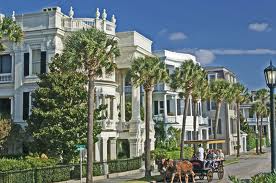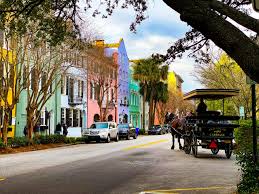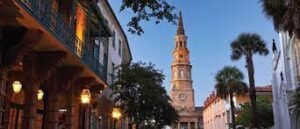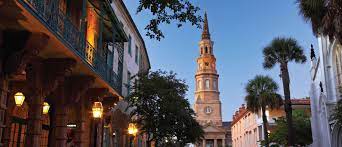
What does it take to edge out San Francisco as the second best city in the Country? What kind of upstart creeps up on the City by the Bay and overtakes it in the latest Travel + Leisure Poll?
I left portions of my heart in San Francisco when I departed several decades ago. It is a city that makes its residents cry with joy during moments of quiet contemplation, I could stand in the middle of the Golden Gate Bridge walkway, look out at the Marin headlands, and instantly realize that wherever my life’s journey might take me, I would never see a more beautiful sight than this.
New York is large, lots of voters for reader’s polls, and for good reason, always a sentimental favorite. Being Brooklyn bred; I have never denied New York its rightful claim as the best city in America. But I know that those votes don’t necessarily mean that readers of Travel + Leisure might voluntarily choose to live there.
But, it seemed to me, San Francisco was always deserving of second place, a city nearly everyone would want to call home. How many times had I struck up conversations on a return flight to SFO when my seatmate would ask how long I would be visiting the city? It was, I confess, entirely pleasurable, to reply “Oh, I’m not visiting. I live there.”
So it was with some surprise that I learned that the city of Charleston, South Carolina had achieved its highest rankings ever, displacing San Francisco and outscoring Chicago on the new T+L Best City List.

I had to find out why Charleston is on such a fast track given its mint julep on the porch, magnolia-strewn plantation image. But first, I would head to Kiawah Island to ease into the low country comfortably. Besides, this wasn’t just a writing trip. My wife and I had appointments with two real estate agents to get the lay of the local land and to, quite possibly, place the low country on our list of the next place we might move.
Charleston’s airport was functional in a 1970’s kind of way. It reminded me of a large efficiency apartment with gates and only the necessary food outlets.
I knew the folks in South Carolina would be polite. But I was surprised that they never asked me for ID or my driver’s license at the car rental counter. They just smiled and told me to have a good time.
I currently live south of South Carolina, on the southern tip of our most southern state. And you know what? There isn’t a single thing southern about it. To get to the South, you have to go north.
So I was mighty impressed as we skirted Charleston and headed southwest toward Kiawah Island.
The drive is about forty-five minutes and you approach Kiawah via Bohicket Road, a two lane road where civilization seems to retrench one hundred or so years after you pass the Piggly Wiggly on St. Johns Island. At that point, something magical starts to happen.
Huge Oak trees line both sides of the road with powerful branches holding carpets of green leaves. It is like driving under a protected canopy and you have to marvel at the play of sunlight as it sweeps through the foliage above in streaks of momentary brightness. I kept waiting for organ music, an understanding expectation given the experience and the fact that we passed about two dozen country churches in little more than three songs on Lite Country.
What is most amazing is the way this road goes on for about twenty minutes. It is like a fun ride that lasts longer then it’s supposed to because the carnival worker forgot to turn the off switch.
Finally, you come to a roundabout and a small village of shops called Freshfields. There is a world class grocery where fois gras is readily available and there was a farmer’s market on the square as we arrived.
The largest business in town was the bicycle sports shop, which tells you pretty much all you need to know about Kiawah. It looked like urban planning if Steven Spielberg was your architect.
Passing security en route to a few nights at the private island’s five-star Sanctuary at Kiawah hotel, I felt like I was entering golf heaven. There were arboretum quality plants and marshes as far as the eye could see. Some of the home sections off the main road had boat docks and quiet inlets for kayaking. There were several small villages filled with a few shops selling necessities like ice cream and surfboards.
Some of you have accompanied me on my journeys for the past several years, and you know that I have never laid claim to being any kind of expert on travel within the United States. But I will tell you that Kiawah Island has more of the most beautiful streets I’ve ever seen in America. The low country architecture and the antebellum porches, the greenness of it all, made me think as I drove the inner access road around the island that I might be waylaid at any moment by a gang of Confederate homeowners and invited in for sweet tea.
The Sanctuary struck me as one of the finest vacation destinations in the United States. . It is safe, protected, relaxing, and child-friendly. The Kamp Kiawah Program includes observations of animals in their local habitats. The swimming complex is commented by wooden bridges to the powder white sand beach, a beach that stretches for ten miles.
It took ten years of planning to construct this 255 room property and it shows. Non-golf or tennis guests, or those who want to forego the beach or waterspouts, will quickly discover the joys of bicycling miles of paths that lead past marshlands and lovely neighborhoods lined with low country style, double floor porched residences.
The spirit of the place is encapsulated by the number of residents, renters, and hotel guests who choose to get close to the bird and human enclaves by traveling the hundreds of bicycle paths. It as though this civilization finally came to the conclusion that automobiles inhibit human interaction. I imagine one of the hazards golfers face as they approach the greens is a phalanx of helmeted, lost bicyclists seeking their way back to the trail.
One night we drove off-campus and went to an Oyster Roast and BBQ at Mingo Point on the banks of the Kiawah River.
There were huge wooden tubs filled with fresh oysters that had been roasted on coals. You shucked your own in the flickering sunlight as the local band played on and the crowd helped themselves to cooked steaks and hush puppies, ribs and vinegary Cole slaw. Children rocked back and forth in large swings with views of the river and we walked out on the pier as the sun was setting to watch the kayakers maneuver, slowly, through the marshes.
On our last night at Kiawah we had dinner at one of the country clubs overlooking the 8th hole, the sand dunes, and the Atlantic begging to come ashore. Our waiter asked us if our daughter would like to “run”. It is a young tradition, young children dressed well, running around the manicured grass watching twilight approach as the last golfers putted out and the ocean gently rocked in the sunlight. For some inexplicable reason, children just run around the lovely grounds after dinner. The staff calls it a tradition. I call it watching unbridled joy.
How, I wondered, would the city of Charleston follow this warm-up act?
BLENDING IN WITH CHURCH STEEPLES AND SEARSUCKER
(The Second of a Two-Part Series)

What was it, I wondered, that could cause a coastal town in South Carolina to come roaring into the hearts of readers of Travel + Leisure? Why had Charleston upended San Francisco on the list of “Best Cities in America.”?
Charleston calls itself “The Holy City”, a phrase that has lots to do with the sheer number of church steeples that form a comforting layer of respectability across the city’s skyline.
From its earliest days, Charleston exhibited a degree of religious tolerance, providing religious freedom to the French Huguenots when it was a colony while also providing an environment where Jews could practice their faith. The Kahal Kadosh Beth Elohim congregation, for instance, was founded in 1749.
Catholics and Blacks, among others, didn’t fare quite so well. But that was then.
Now, I am reminded, as I walk the sidewalks of this best preserved of all American beauties, of the words of the great South Carolina novelist Pat Conroy, who said that “walking the streets of Charleston in the late afternoon of August was like walking through gauze or inhaling damaged silk.”
The heat was oppressive but I took delight in that fact because against all odds, I was falling for this place during the single month when the odds were stacked against such feelings.
What is it about this place that makes it so intoxicating? Conroy had at least a partial answer.
“Charleston has a landscape that encourages intimacy and partisanship. I have heard it said that an inoculation to the sights and smells of the Carolina low country is an almost irreversible antidote to the charms of other landscapes, other alien geographics. You can be moved profoundly by other vistas, by other oceans, by soaring mountain ranges, but you can never be seduced. You can even forsake the lowcountry, renounce it for other climates, but you can never completely escape the sensuous, semitropical pull of Charleston and her marshes.”
So it was all about seduction. It was rather hot and humid to feel much seduction, but there were moments when I felt it.
Friends who live here suggested that the only way to truly feel the Charleston’s vibe was to get about by horse-drawn carriage. So I figured out which stable ran the best operation and I lined up outside their barn for a noon departure in a wagon led by two horses who, the driver, informed me, seemed to be in love. Of course, horses is not entirely accurate as most of the animals pulling Charleston’s carriages are hinny’s, a strong, intelligent animal that results from the corporate merger of a male stallion and a female donkey.
But Fred and Myrna were not to take me out that day. Our departure was suddenly halted just as I was being seated because the temperature had just hit ninety-eight. The horses can’t go out in temps above ninety-seven. I got out of the carriage and started walking along State Street to Chalmers and Queen Streets.
Along the way I popped into stores and chatted up locals and store owners to try to get a handle on this place that was holding me in its emotional grip despite the humidity of an August afternoon. Fred and Myrna had stopped working but I was on a mission.
The newly arrived cruise ships were a big issue. There were those who said that the daytime visitors from the ships were not the big spenders as, it appears, they were led to believe. Several shop owners seemed genuinely concerned about the new “trinket seeking jean shorted” tourists “coming off the boats like an army of red ants in search of “the best deal on a slice of pizza”.
But one wizened old man in a striped shirt and tie, with wide red suspenders shook off this view and told me, as we shared a bench, that, “this place sells itself. The cruise ship visitors may not spend much but they’ll remember, and they’ll come back, and they’ll tell their friends about this place.”
My walk took me up State Street past men’s stores that have been serving “Southern Gentlemen” for years. One small place featured two salesmen sitting just behind the glass of the front door in the standard Charleston dress uniform, seersucker suits worn properly with bowties. They peered out at passersby, like two hoot owls smiling at some private joke.
As one popular Charleston blog puts it, “we Charlestonians are collectively, dare I say it, the most fashionable and good-looking in all of the Southeast.” I would not question such modesty.
I stopped in at M. Dumas & Sons and scanned the seersucker but I couldn’t see it fitting in with a visit to Wrigley Field.
It was about this time, as I left State Street, that I began to realize that I was becoming addicted to a purely southern vice for which there was no known cure.
I love Sweet Tea. I can’t describe the real thing to you; you just sort of know when you’ve got it. And Charleston is the epicenter of the Sweet Tea revolution. It has something to do with just the right amount of cane sugar but I can’t go further than that. I can tell you that when you realize you can’t walk more than two city blocks without a sip of the stuff, you are an addict.
I walked on to Chalmers Street and the Old Slave Mart. Charleston has been criticized for its lack of official recognition of the slave trade during the antebellum period. But for many tourists who can trace their heritage back to relatives who entered the country aboard the fetid ships that served the trade, a visit to Charleston is fraught with meaning.
At one time, slaves were sold in batches on the steps of the old Customs House in the center of the city. But some of the local women thought it unfashionable to be walking past low tables where slaves, offered at public sale, were chained together. These low tables were set up in yard sales and marts along Queen and State streets.
In 1856, the city fathers passed an ordinance that outlawed the public sales of human beings.
In the early evening, as dusk was approaching, I went back to the horse stables. The temperature had dropped to 91 and Fred and Myrna were ready to show me their city.
It was a lovely night and I felt totally engaged with this place as the horses hoofs clomped effortlessly along the darkening streets. We stopped at an overlook facing out at the harbor and I missed the guide’s words as I peered out at Ft. Sumter.
Our tour continued past the best real estate in Charleston, the homes “South of Broad”, a demarcation line separating the affluent from the wealthy with bragging rights. To live south of Broad Street was to cement one’s authority to Charleston upper crust citizenship, perhaps assisting with membership in one of the many private membership clubs in the city.
Such is the tenor of the lively Charleston “Social Season” that even after General Beauregard and his men fired on Union troops stationed at Ft. Sumter to start the Civil War,, a number of local hostesses chose the Fort as the location for some of the season’s most elegant parties.
As the “War of Northern Aggression”, as they still call it down here, began it’s second year, Charleston high society was still awash in champagne, fine party foods, and expensive clothing.
Still later that night I enjoyed one of four in a row spectacular and rather unplanned meals. I was a restaurant critic for years so I am not easily impressed by claims of great food. But just let me tell you that your clients can totally justify a visit to Charleston based entirely on the fact that Charleston, South Carolina has, in my view, the best food per capita in the entire United States.
I set out to challenge that assumption and I failed miserably. I was done in by the Maverick Shrimp and Grits at Slightly North of Broad (SNOBS) and the Lobster and Corn Chowder and Coconut Cake at the Peninsula Grill.
As I was leaving the magazine shop at the Charleston Airport, on my way home, a woman went to pay for a magazine but realized she was out of money and reduced to credit cards.
“Don’t worry darlin’, the cashier replied, just pay us the next time you see us. We know you’ll be back.”
Indeed.

